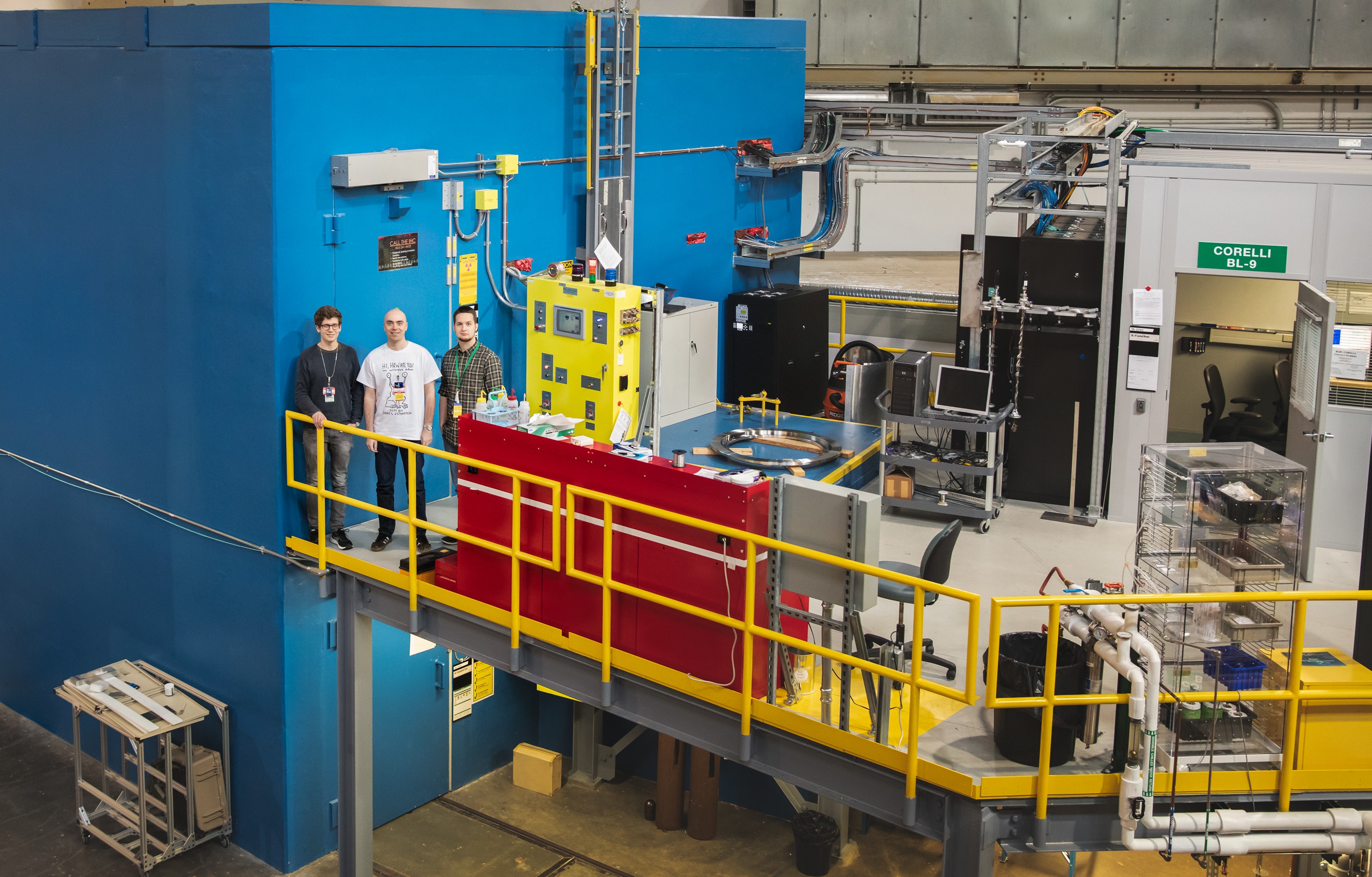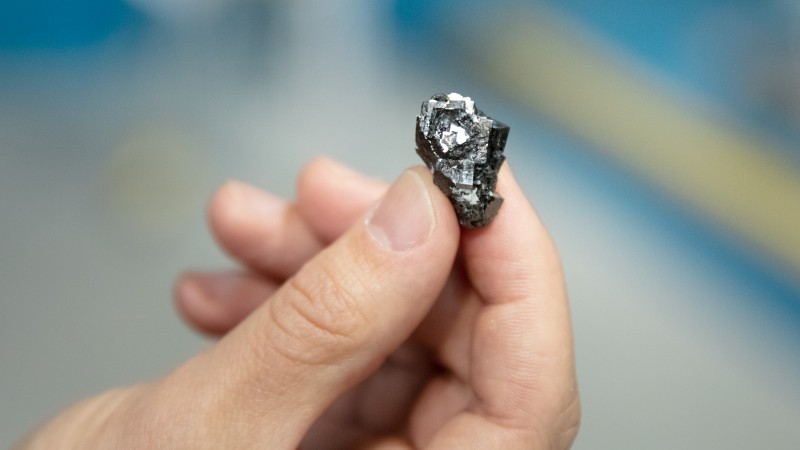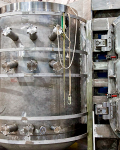Identifying a material’s magnetic structure is a key to unlocking new features and higher performance in electronic devices. However, solving increasingly complex magnetic structures requires increasingly sophisticated approaches.
Researchers from the Center for Materials Crystallography at Aarhus University, Denmark, are pioneering a novel technique to solve highly elaborate magnetic structures using neutrons at the Department of Energy’s (DOE’s) Oak Ridge National Laboratory (ORNL). Their aim is to develop the technique—based on mathematical analysis of large three-dimensional diffraction data—to establish a baseline approach that can be adapted to a broad class of magnetic materials with different structures.
“In magnetic materials, many of the atoms have a magnetic moment, or a spin, that acts like a very small magnet. In typical magnets, like refrigerator magnets, each one of them is aligned in the same direction and they combine to form a larger magnetic moment—that allows us to stick stuff to our fridge. That’s an example of an ordered magnetic structure, where a specific pattern is repeated over and over,” said Aarhus researcher Nikolaj Roth. “But we’re more interested in disordered systems, or frustrated magnetism, where there is no long-range magnetic order. Where there is no fixed pattern of spins, which repeats itself. This is where all sorts of neat things happen.”
Although “frustrated” or disordered magnetism may seem random or even chaotic, “it’s not,” explained Roth. There are correlations between the spins, if only for a short distance—known as short-range magnetic order. If the dynamic properties of frustrated magnetism can be harnessed, these materials could be used to develop new electronics with tremendously advanced capabilities. That, of course, hinges on the ability to identify short-range correlations in magnetic materials faster, more efficiently, and on a much broader scale.
“A few years ago, we developed a new technique for analyzing the data which made it possible to see these short-range correlations very easily,” said Roth.
In the early experiments, the team successfully calculated the magnetic correlations in a bixbyite sample—a manganese-iron oxide material found in Utah. In this follow-up experiment, they used bixbyite from South Africa that has a different ratio of manganese to iron and therefore has a slightly different magnetic structure.
“We’re getting help from Mother Nature in that we don’t have to synthesize these materials, they are simply found in the ground,” said researcher Kristoffer Holm. “The sample from Utah is about 50:50 iron to manganese, whereas the one from South Africa is more like 70:30. They’re very closely related samples, and we’re hoping they can tell us how the differences in composition will affect their short-range correlations.”
Neutrons are well suited to study magnetic behavior because the particles themselves act as tiny magnets. Neutrons can penetrate many materials more deeply than other complementary methods; and because they have no charge, they interact with samples without compromising or damaging the material to reveal critical information about energy and matter at the atomic scale.
By themselves, pure iron and pure manganese compositions have ordered structures at low temperatures, at which their spins are aligned in accordance with a specific repeating pattern. But when they are combined, they become disordered and form a “spin glass” state below 30 Kelvin (about minus 400° Fahrenheit), where a complex pattern of spin alignments becomes fixed.
Short-range magnetic order has a weak signal and is difficult to detect with conventional neutron scattering instruments. However, the CORELLI beamline at ORNL’s Spallation Neutron Source (SNS) provides a high flux, or large number of neutrons, with a detector array that can capture large volumes of data quickly and in unprecedented detail. Using CORELLI, the team was able to quantify the South African bixbyite sample’s magnetic structure to make comparisons between it and the material’s atomic structure.

The research team, (left) Kristoffer Holm, Nikolaj Roth, and Emil Klahn, stands next to the CORELLI
neutron scattering instrument at ORNL’s Spallation Neutron Source. (Credit: ORNL/Genevieve Martin)
“CORELLI is the only instrument in the world that could do this experiment the way we need it to be done. It allows us to measure in all directions, even at high angles, and it does it very fast, which is exactly what we need for the technique we’re developing,” said researcher Emil Klahn. “Even if we could do it at another facility, it would take weeks to do what we’ve been able to do in only a few days.”
The team says that with a fully developed technique, they will be able to study similar materials that exhibit bizarre and unusual behaviors or states of matter; candidate materials include quantum spin liquids, spin ices, and unconventional superconductors. In turn, those insights could lead to a wide range of radically advanced electronic applications.
SNS is a DOE Office of Science User Facility. UT-Battelle LLC manages ORNL for DOE’s Office of Science. The Office of Science is the single largest supporter of basic research in the physical sciences in the United States and is working to address some of the most pressing challenges of our time. For more information, please visit https://energy.gov/science.—by Jeremy Rumsey







